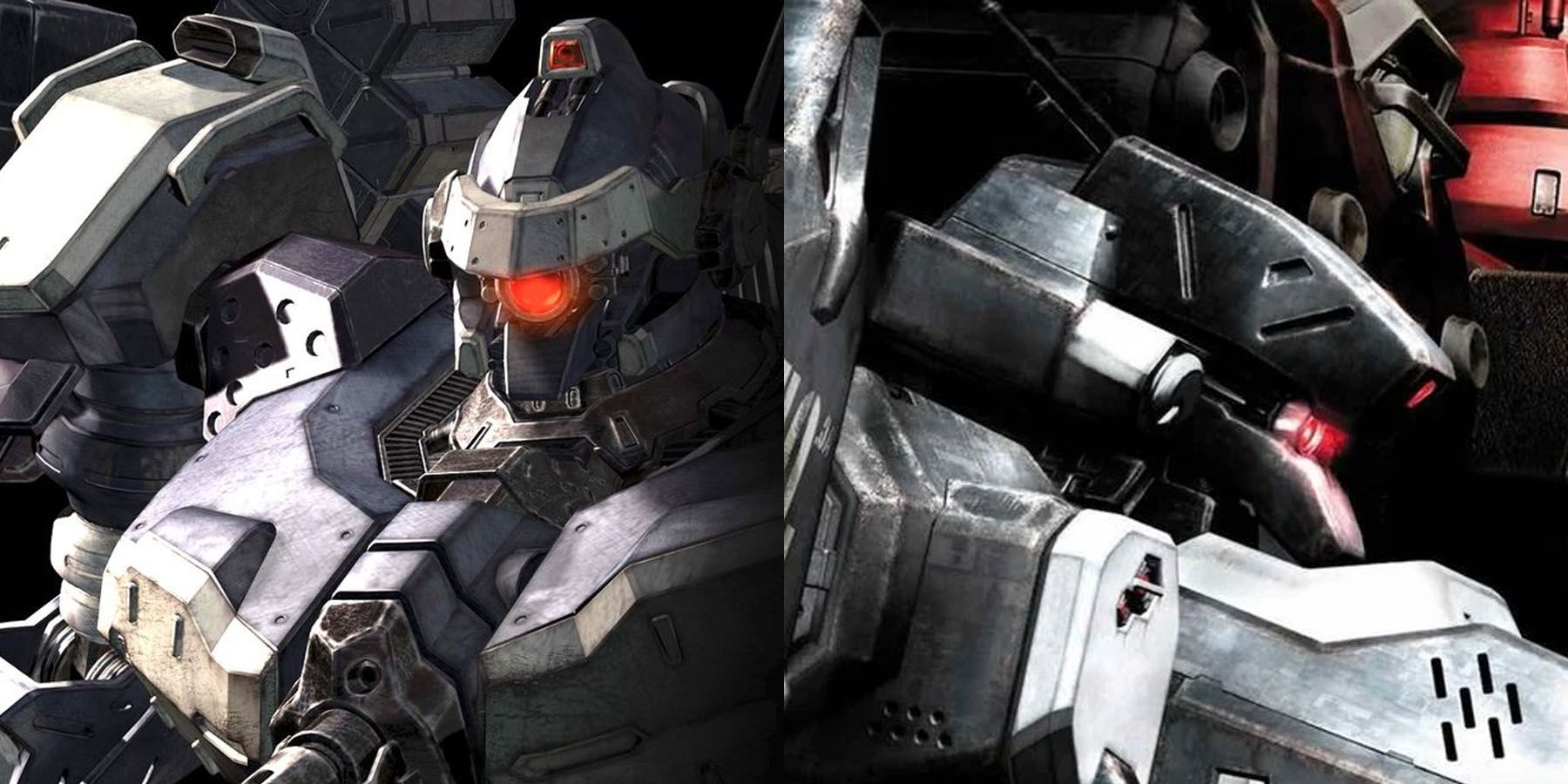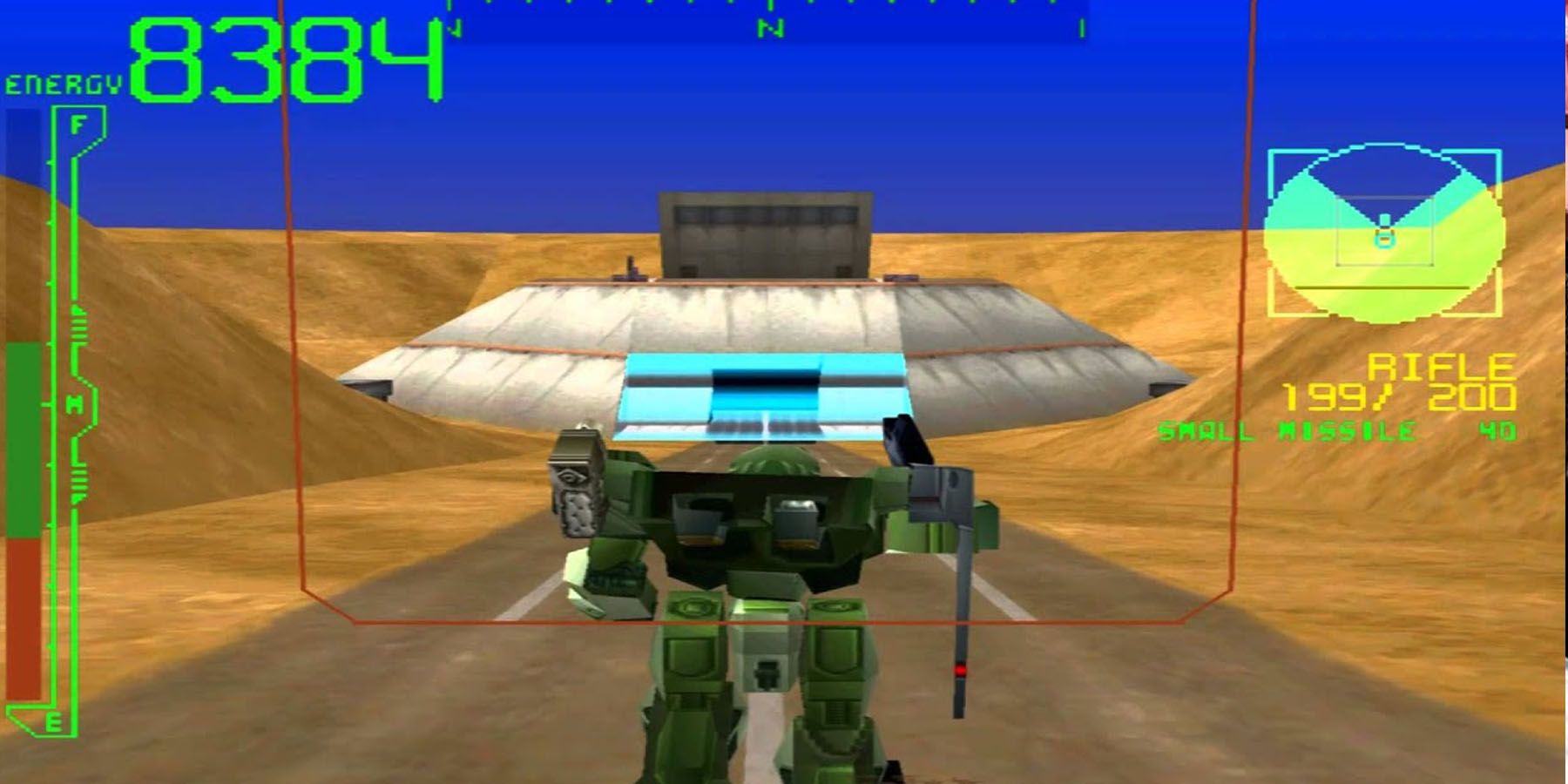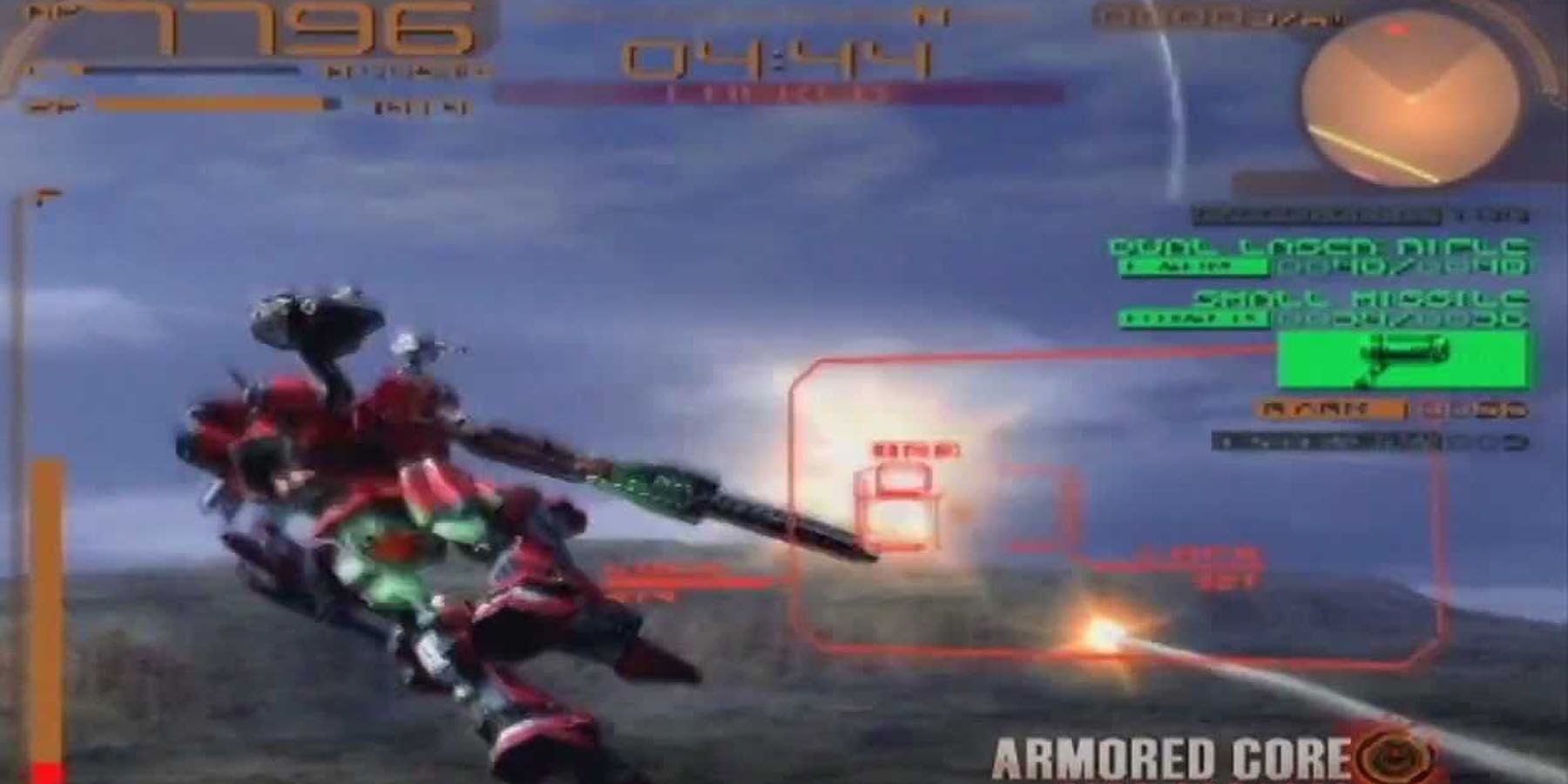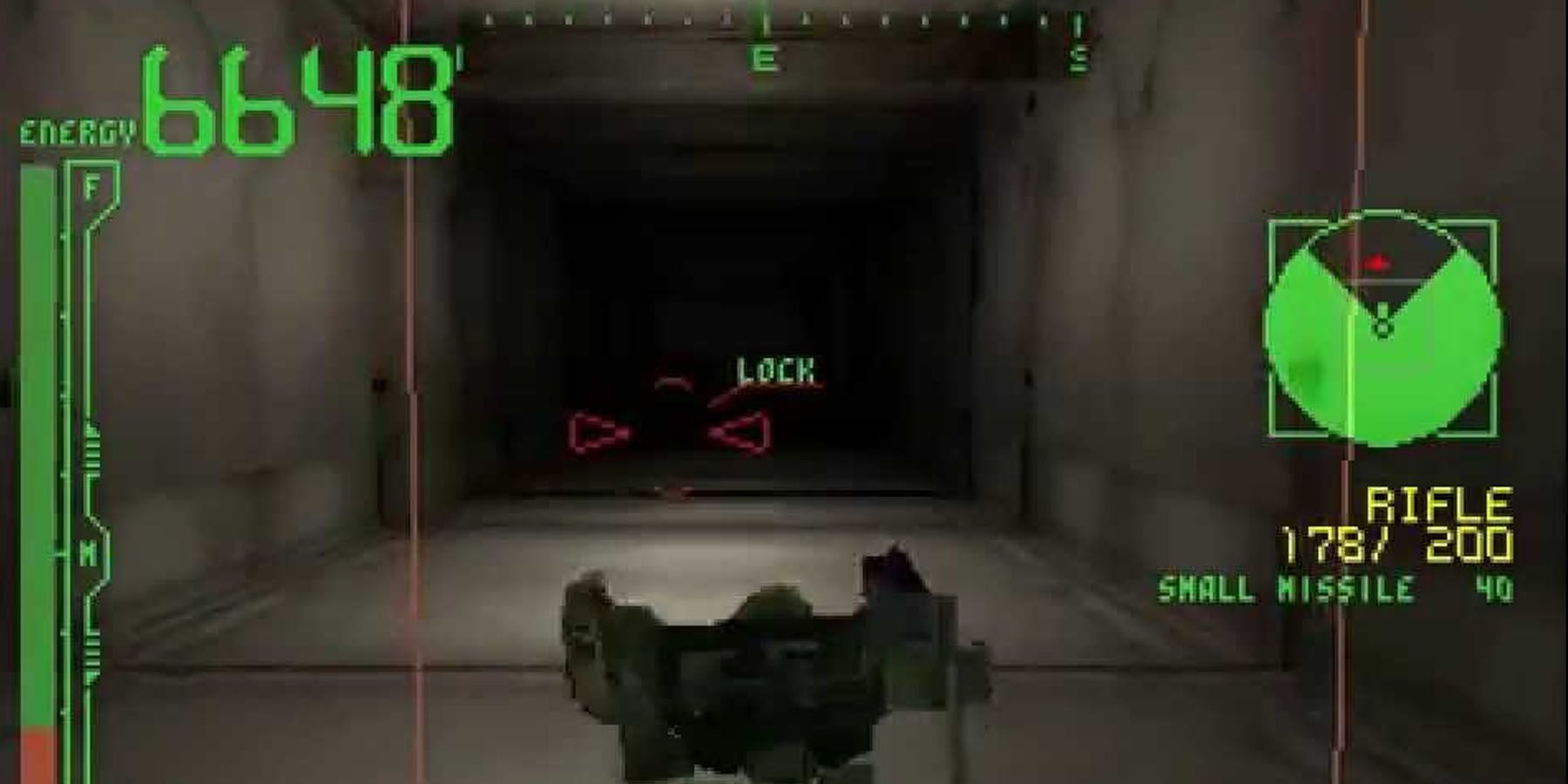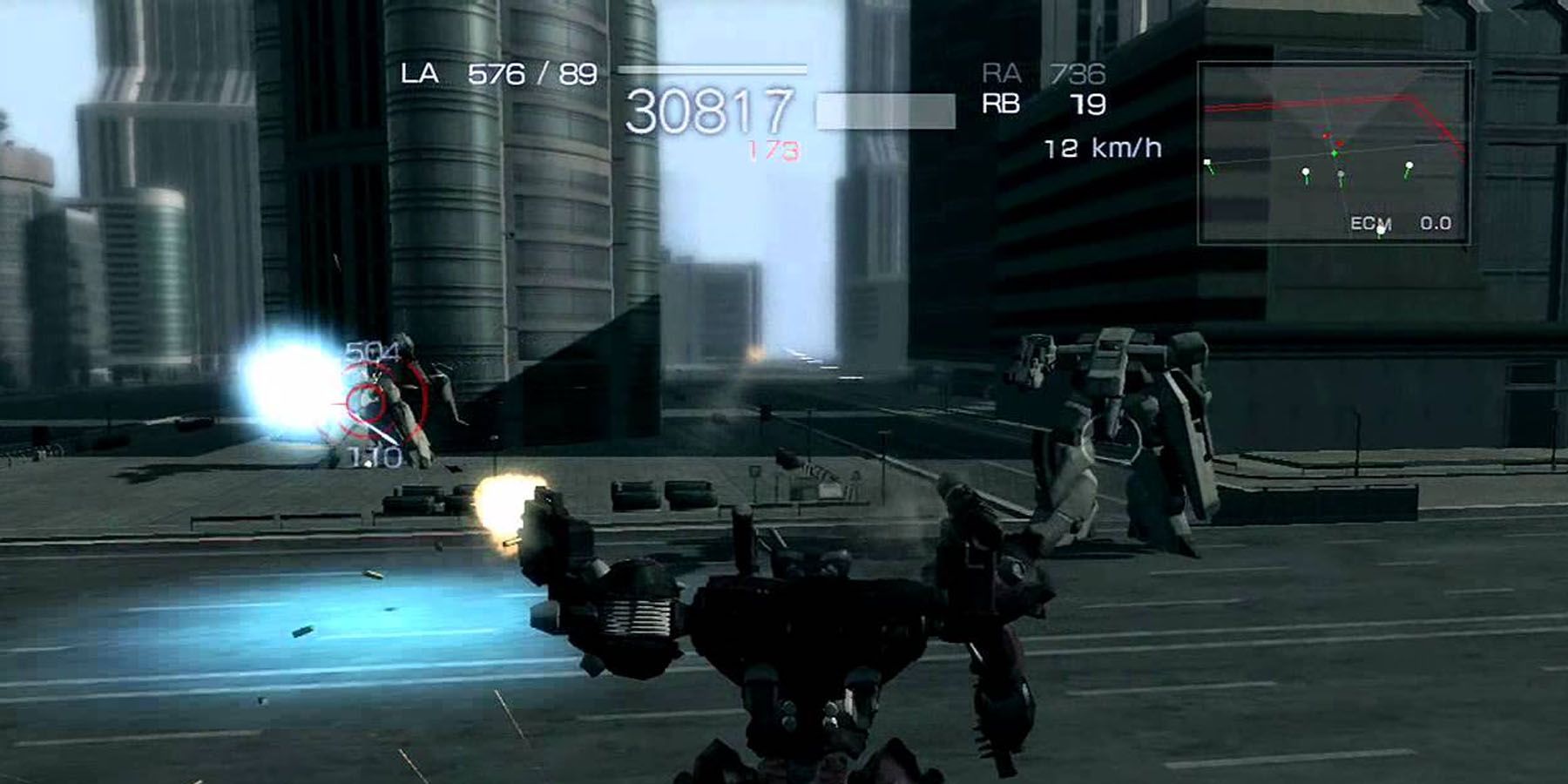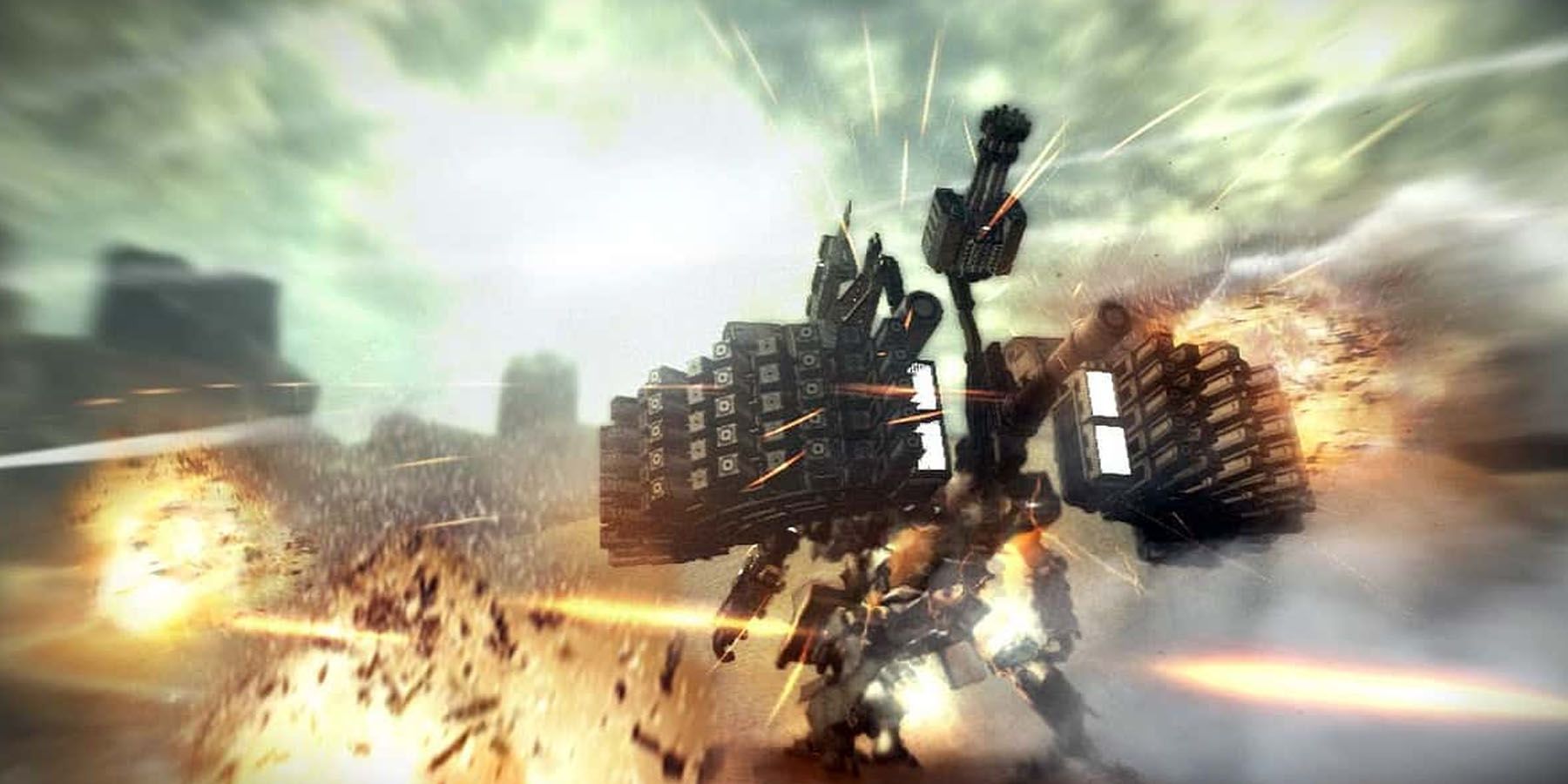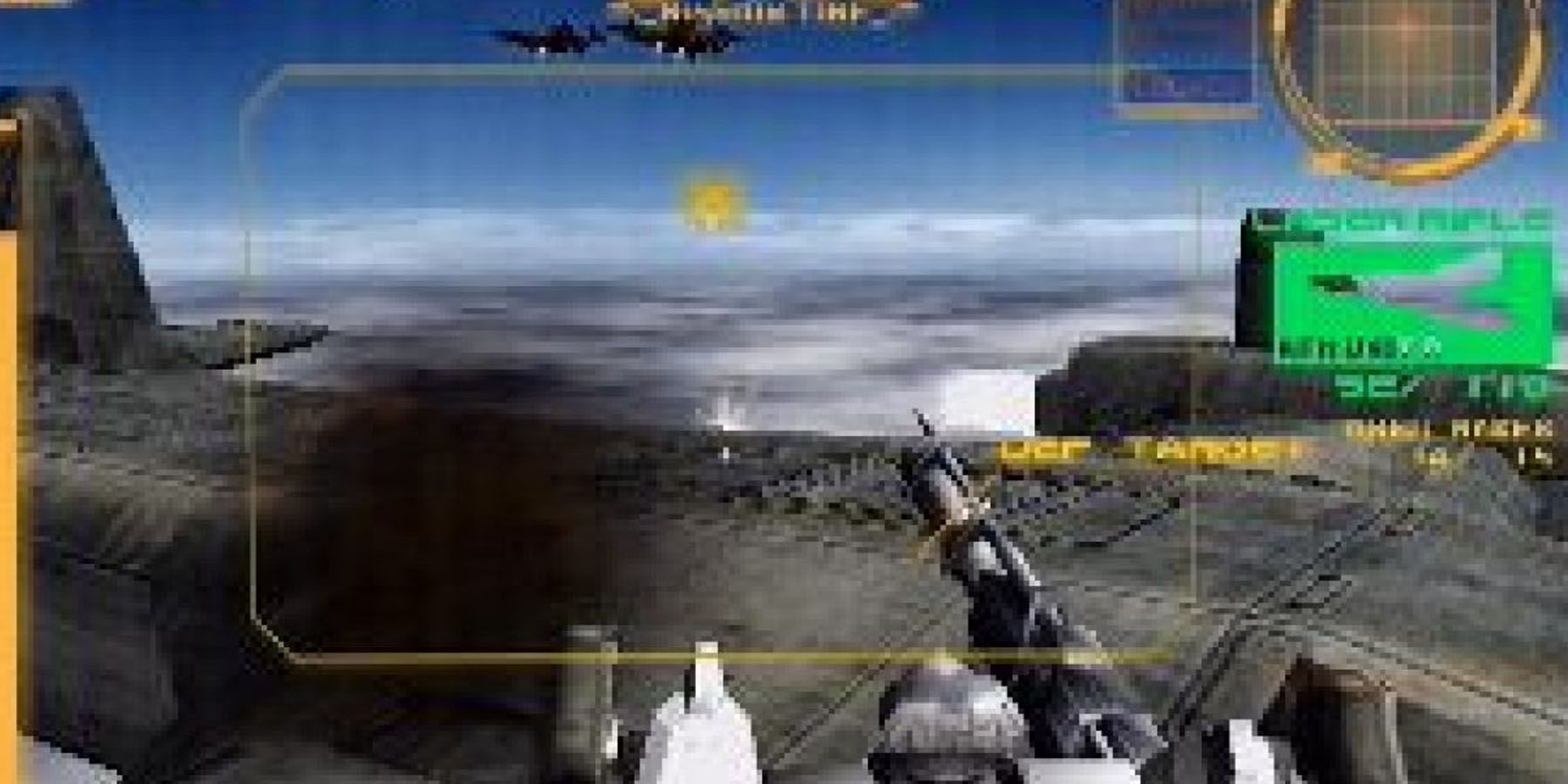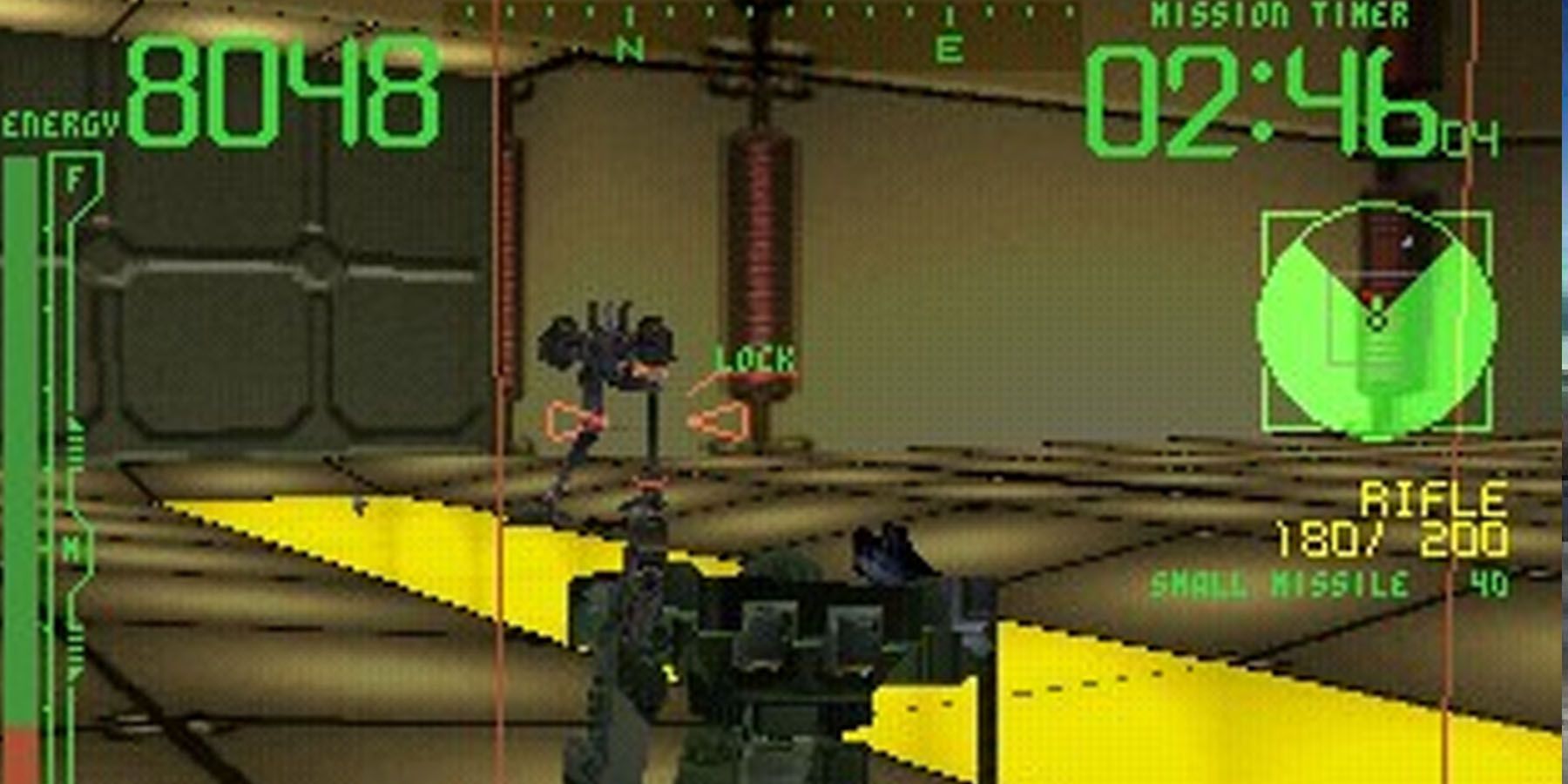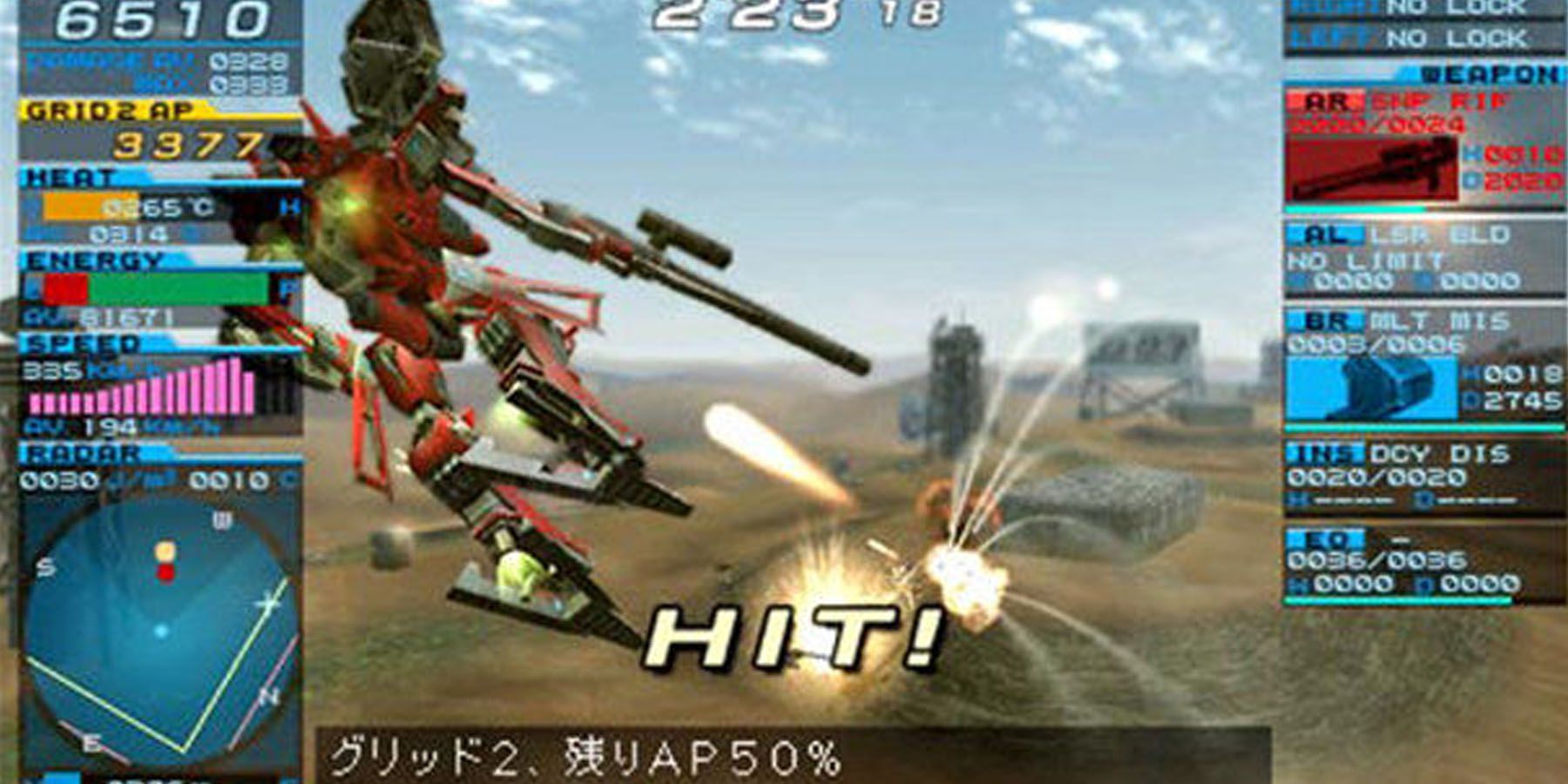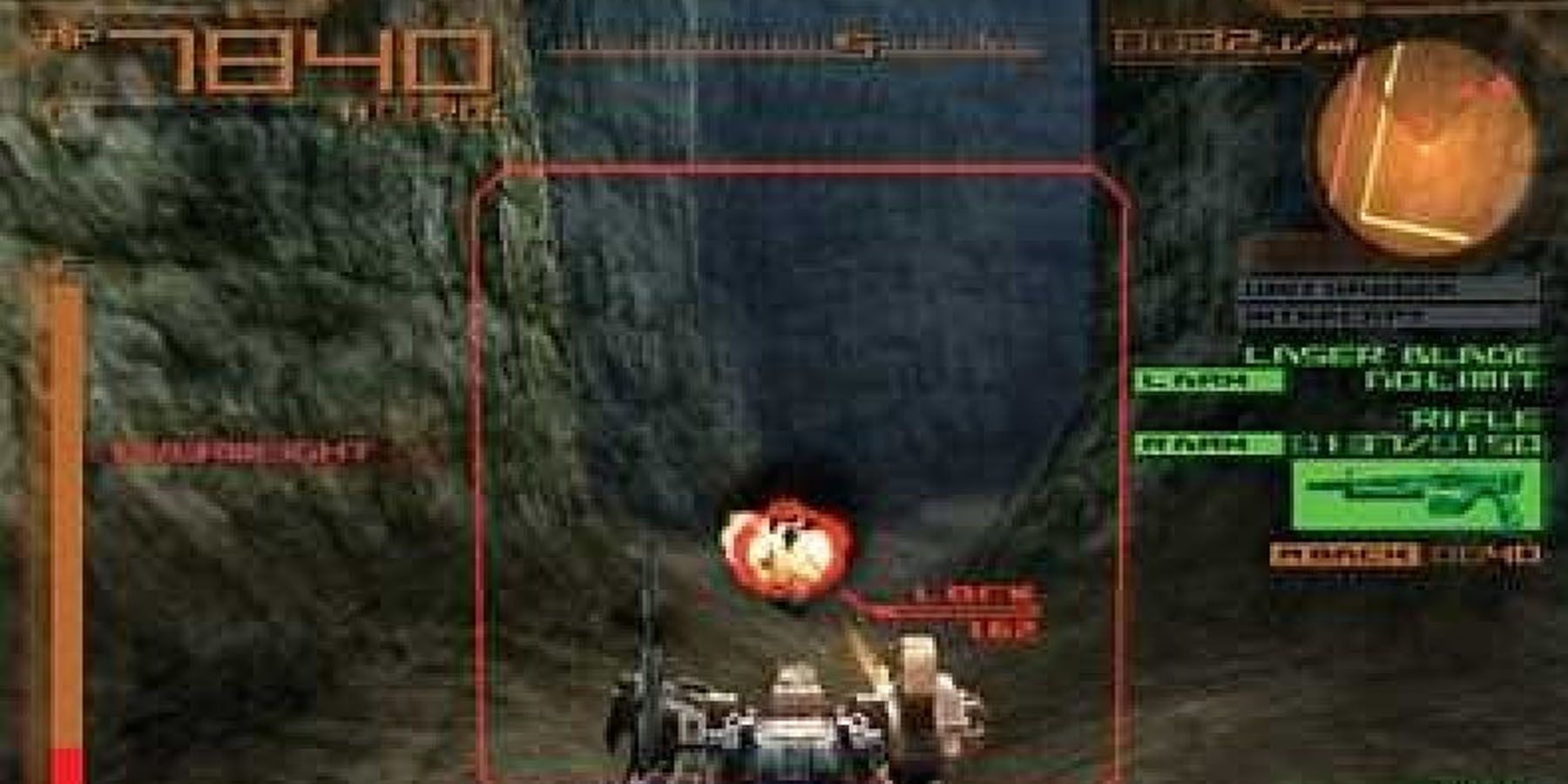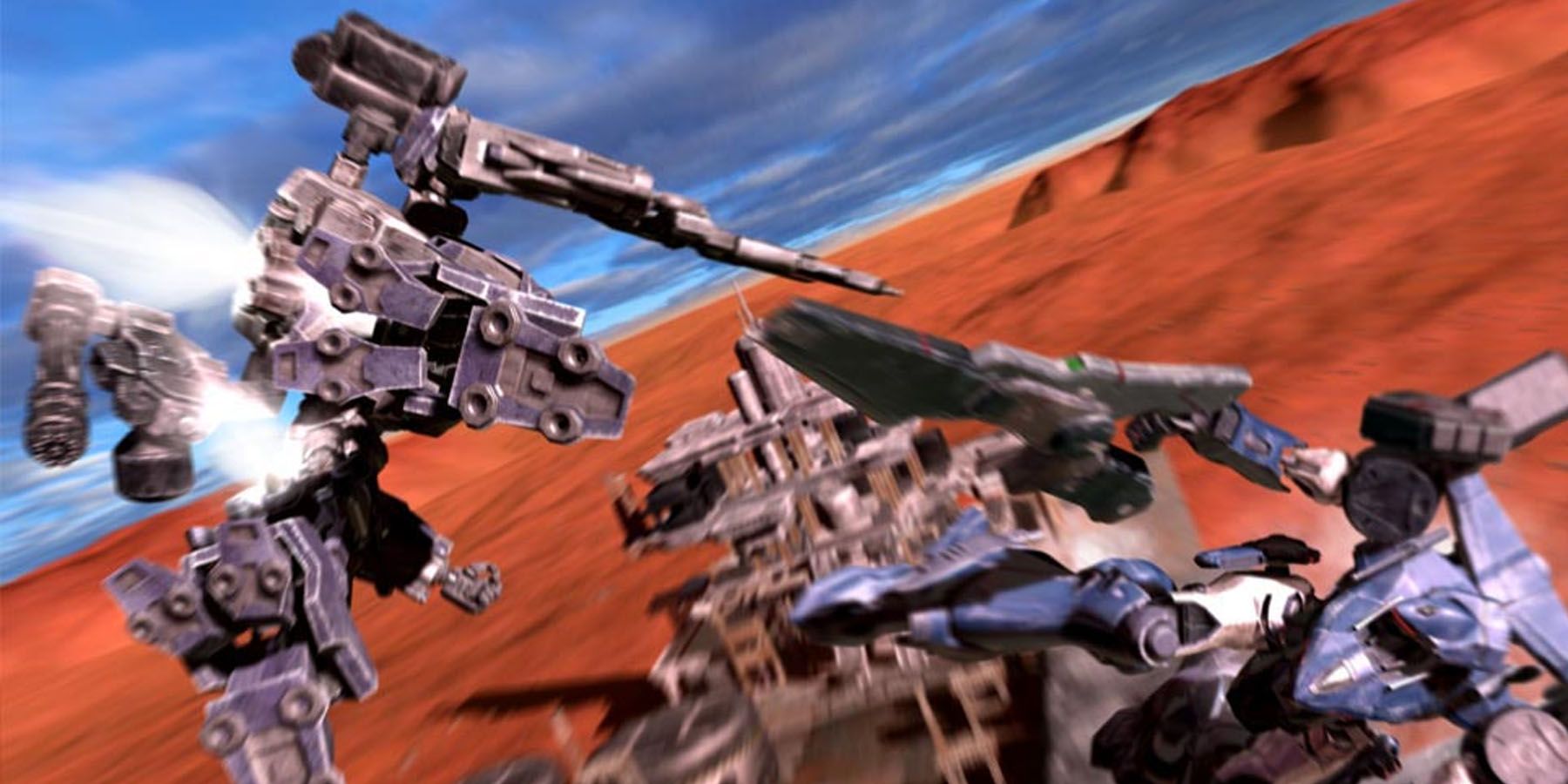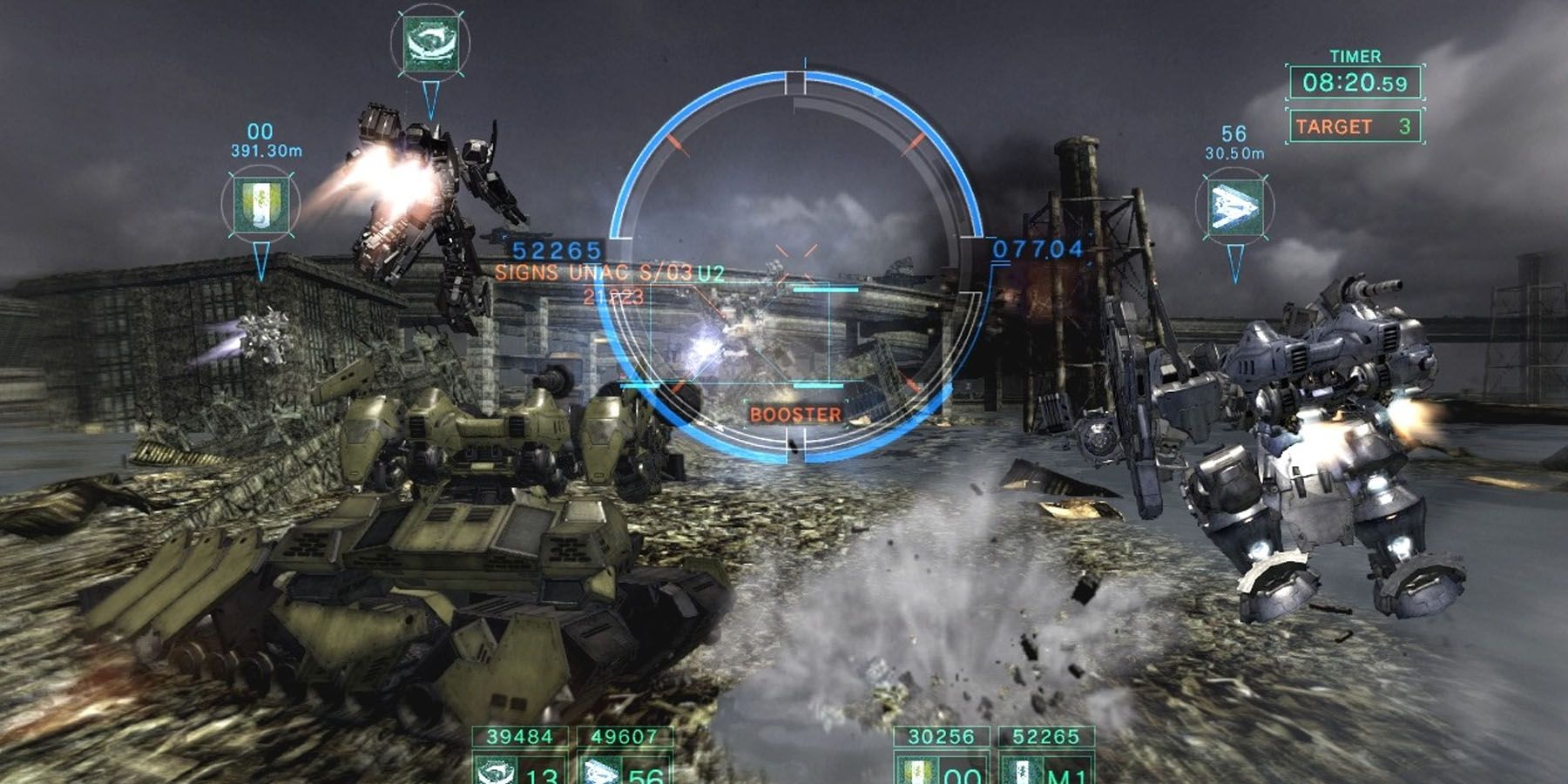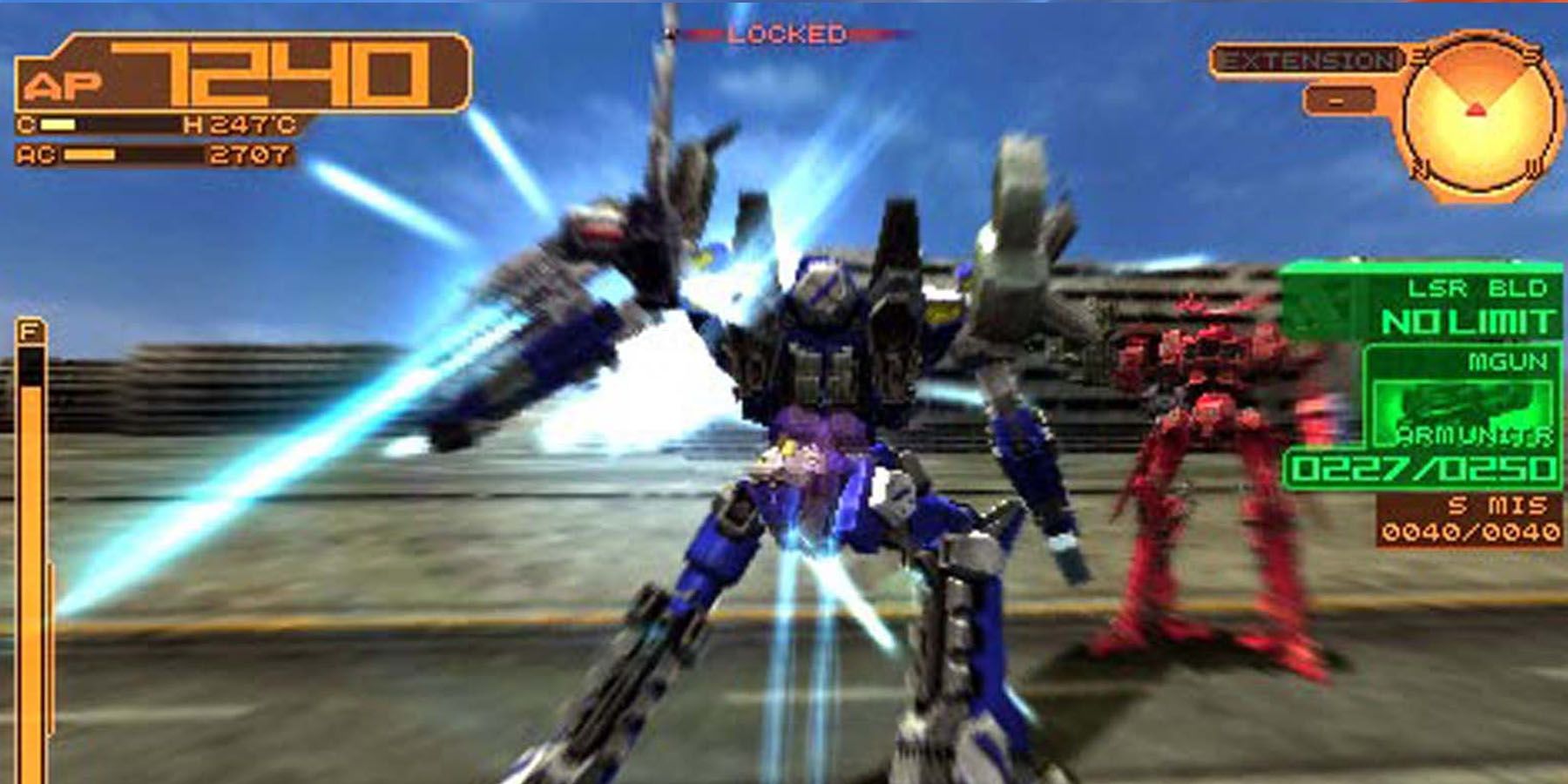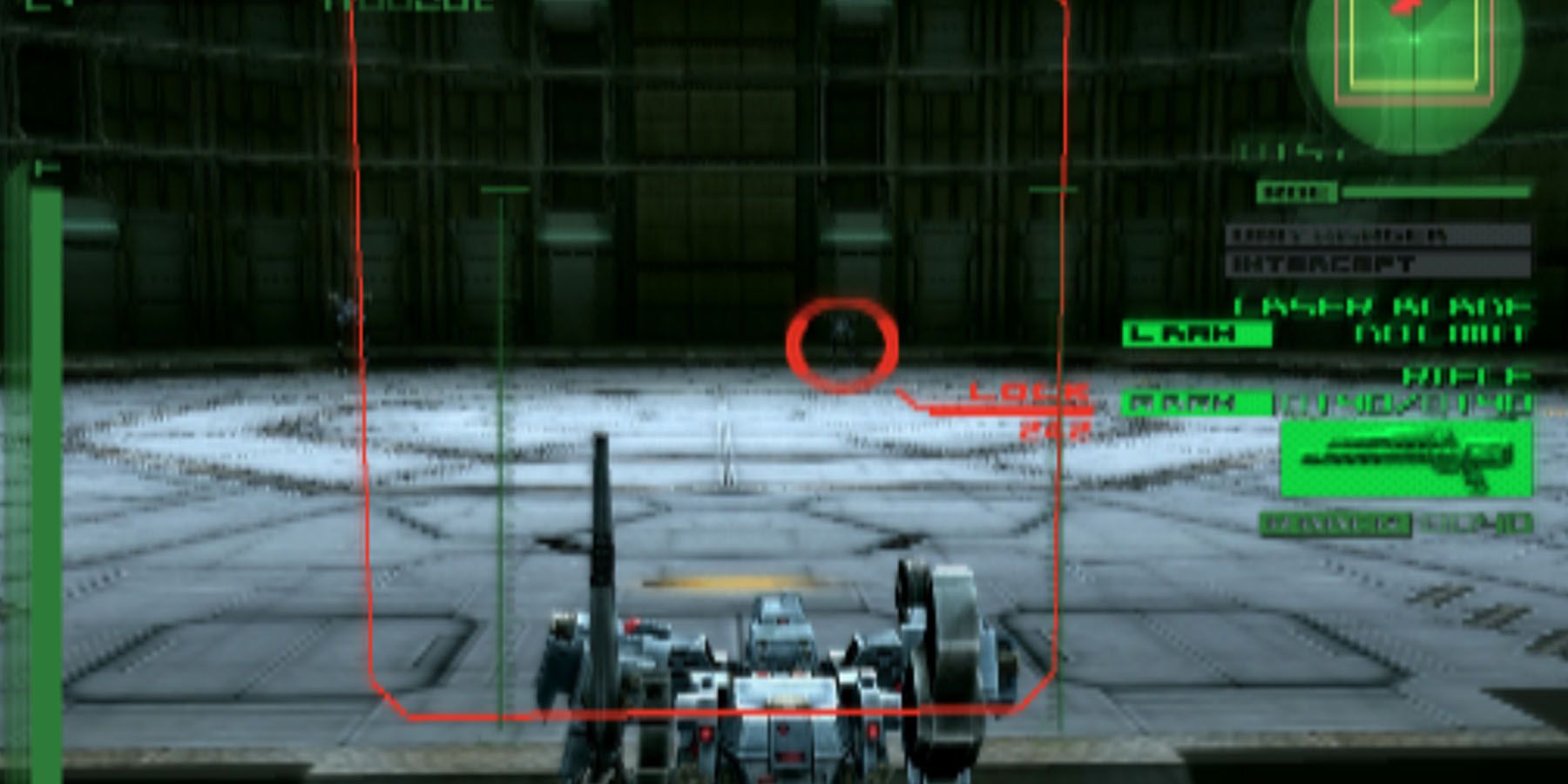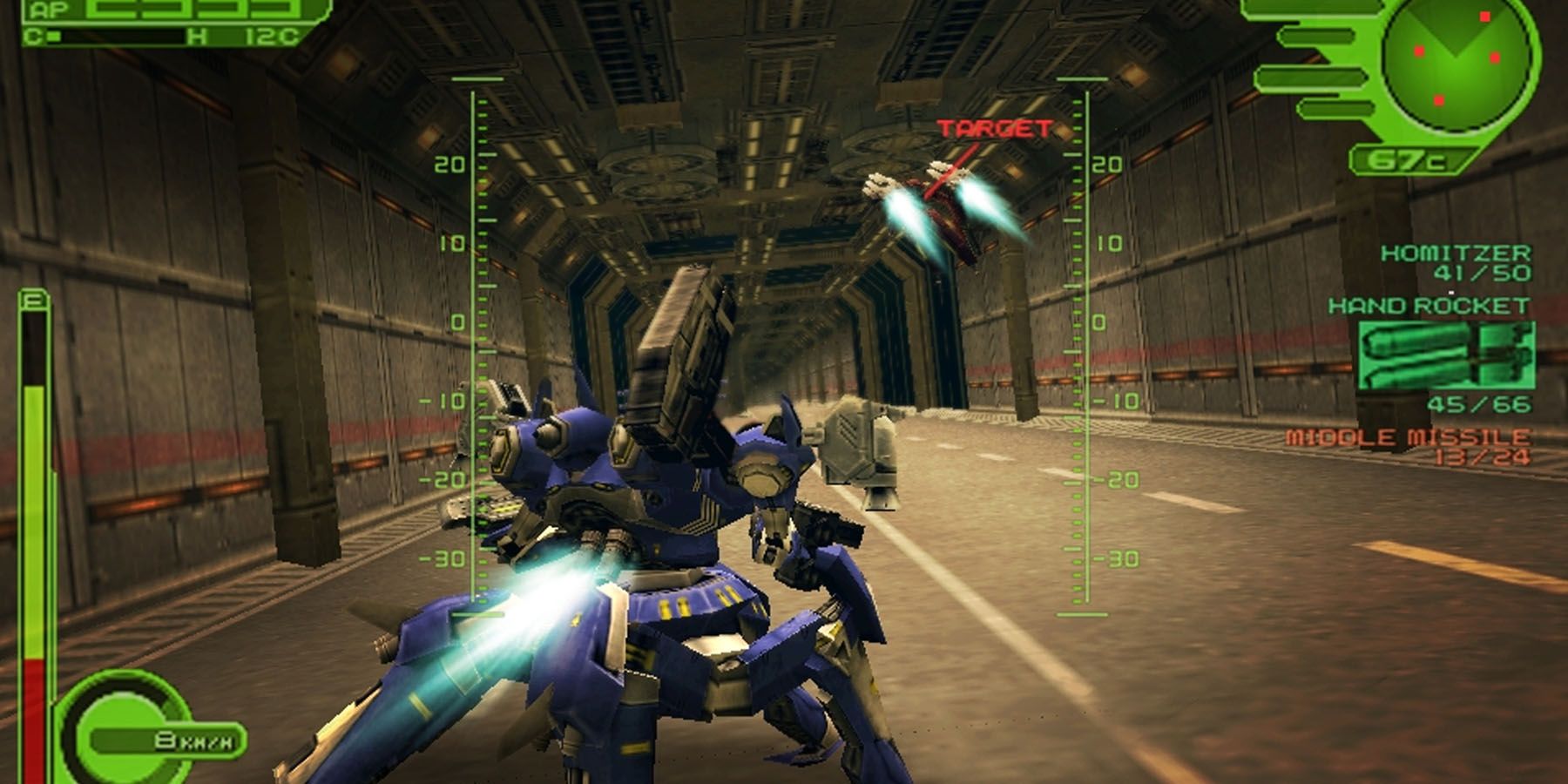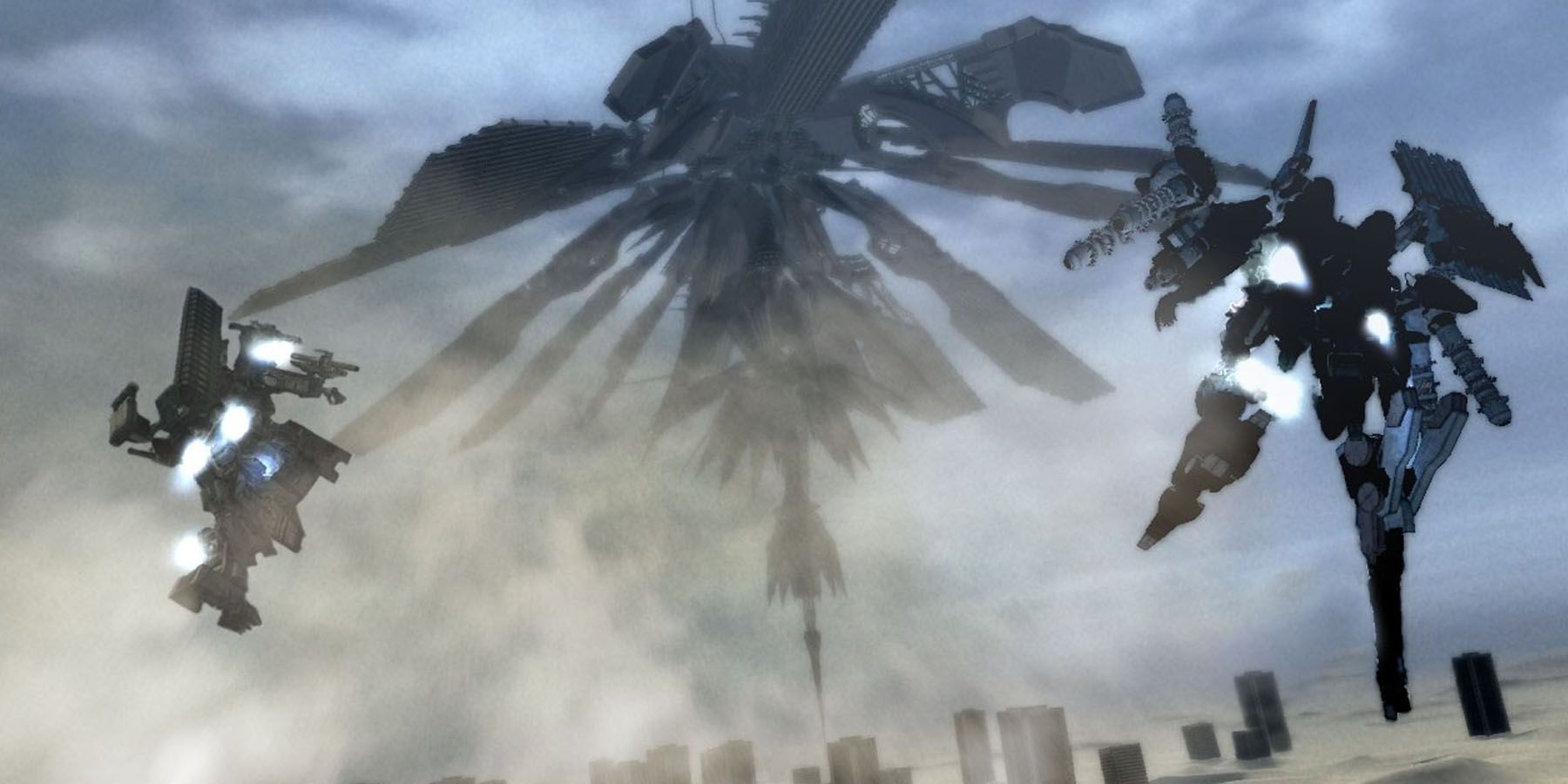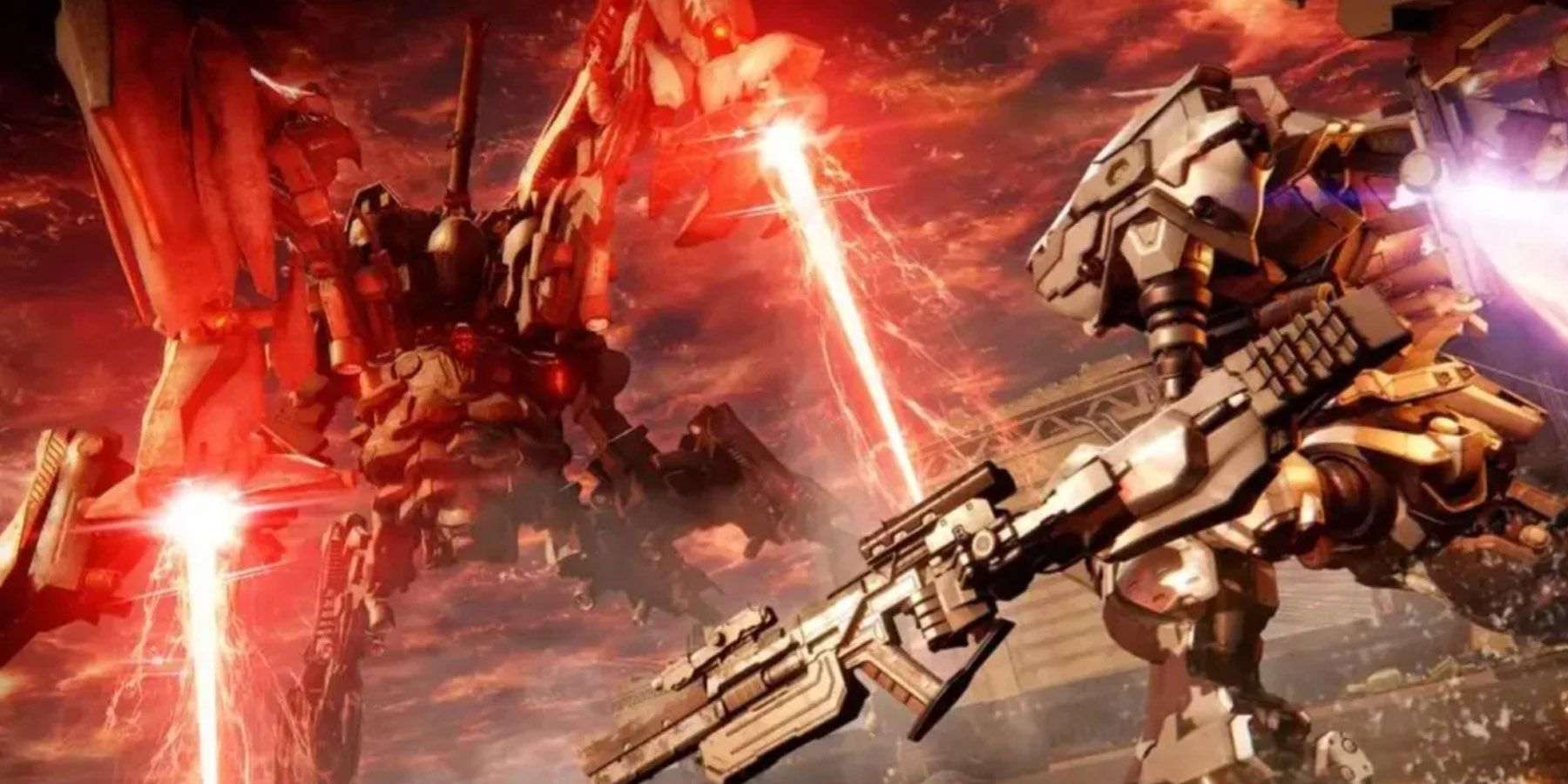Highlights
- FromSoftware's Armored Core franchise offers a different experience than Dark Souls, focusing heavily on simulation and mecha customization in both construction and combat.
- Armored Core games have varying levels of intensity and depth, with some being more straightforward and others offering a more overwhelming experience for gamers.
- Armored Core 6, set for release in 2023, boasts improved graphics, challenging gameplay, and emphasizes meticulous mecha construction and AI planning, making it a must-play for mecha fans.
Given the popularity of Dark Souls, it’s incredibly easy to associate FromSoftware with Dark Souls and other Souls-like games. However, it’s interesting to note that FromSoftware isn’t always about their “git gud” hit franchise, as mecha fans love the devs for its Armored Core series. Unlike Dark Souls, the Armored Core franchise focuses heavily on simulation - both in terms of constructing mecha and using them in combat.
Contrary to Gundam, each Armored Core title carries a particular level of intensity with regard to mecha customization and gameplay, to the point where it can become quite enjoyably overwhelming for gamers. However, for newcomers to the franchise, just how would they rank Armored Core games?
Updated on September 29, 2023 by Rhenn Taguiam: With Armored Core 6 primed for an August 25, 2023 release, fans of the acclaimed FromSoftware franchise may be excited to secure their perfect mecha and duke it out against AI and player opponents. However, Armored Core 6 boasts improved graphics and challenging gameplay FromSoftware fans would be familiar with, giving a mechanized flair to thrilling fights. And with the game significantly emphasizing meticulous mecha construction and AI planning, Armored Core 6 is a much-needed breather for mecha fans. In turn, enthusiasts may also be interested in how previous entries in the series fared in terms of specific mechanics and the way they improved upon the franchise over the year.
16 Armored Core: Project Phantasma (1997)
- Platforms: PlayStation
Players who want a more straightforward Armored Core experience will appreciate Armored Core: Project Phantasma, the second game in the series and set two years before the first game. In the story, players take missions, earn money, and meticulously upgrade their ACs as they explore the research site of what’s only known as Project Phantasma.
Unlike the first game, Project Phantasma only has 17 missions, a far cry from the first title which has 50. However, while Project Phantasma offers a neat cross-save option from the first game, the more linear approach does make it a fast and loose experience.
Claim To Fame: Armored Core: Project Phantasma
Despite the lack of a number of missions in Project Phantasma, the sheer depth and weight they add to the story were a welcome addition in the early stages of the franchise. Unfortunately, graphics do need work and the core gameplay wasn’t that improved compared to its predecessors, leaving a lot to be desired for the entry.
15 Armored Core: Nine Breaker (2004)
- Platforms: PlayStation 2
Players who want to skip the rather convoluted plot of the Armored Core series can simply enjoy fighting robots in Armored Core: Nine Breaker. The game skips a story mode and instead only has two modes, a Training Mode that challenges players with various gameplay mechanics, and an Arena Mode where players pit their AC against AI. The Training Mode reveals that the Arena Mode is currently training individuals for a potential war as everything is currently at peace.
Unfortunately, the game doesn’t offer anything else that can have players stick for the long haul. Unlike other games, a majority of AC parts are already unlocked for tinkering. Moreover, there’s no multiplayer mode that allows players to challenge friends online.
Claim To Fame: Armored Core: Nine Breaker
Players who want more focus on the building aspect of an Armored Core could rely on Nine Breaker for a decent, more straightforward experience. Unfortunately, those who found appeal in the post-apocalyptic premise of the mecha series might not find much here in terms of story.
14 Armored Core: Master Of Arena (1999)
- Platforms: PlayStation
Fans of the Armored Core franchise will likely remember that Armored Core: Master Of Arena was the franchise’s last entry for the PlayStation before consoles transitioned to another generation. Unfortunately, it didn’t celebrate with a bang as much as fans would have liked. Graphics-wise, Master Of Arena didn’t change much given the system’s graphical limitations.
In terms of gameplay, Master Of Arena definitely retains most of the franchise’s known features but didn’t add quite a lot to set it apart from its contemporaries. New to Master of Arena is the Ex Arena Mode, which is an arena-type brawler that categorizes into mecha types, and the Ranker Mk Mode which adds customization options to the AI of ACs.
Claim To Fame: Armored Core: Master Of Arena
Considered one of the most iconic games in the franchise, Master Arena is the source of the iconic “power” dialogue from Hustler One of the AC Nine Ball, which eventually appears as a recurring character throughout the series. Although gameplay could use some work, its take on its riveting story and the feature of a compelling villain has by far made this into one of the more memorable games in the series.
13 Armored Core 4 (2006)
- Platforms: PlayStation 3, Xbox 360
Serving as a reboot of the first few games, Armored Core 4 spices things up with faster missions and a new storyline. Set after a devastating war in the future, corporations now rule the world and begin to employ ACs to wage war against each other.
While the game retains its strong customization mechanic, Armored Core 4’s fast-paced combat doesn’t complement its rather lackluster overall performance. Environments are a bit dull and cramped compared to the game’s crisper visuals, which doesn’t help its rather straightforward 30 missions.
Claim To Fame: Armored Core 4
The game has players take control of a next-generation Armored Core as an intervening third party in a full-blown war across nation-spanning corporations - an atmosphere that definitely made the game much heavier compared to other titles. Unfortunately, the game relied too heavily on its atmosphere that its storytelling and overall gameplay loop could use more work.
12 Armored Core 5 (2012)
- Platforms: PlayStation 3, Xbox 360
At its core, Armored Core 5 was a return to tradition for the modern Armored Core series, focusing more on tactical gameplay compared to the more fast-paced gameplay of its younger predecessors. While its story still features resistance against an oppressive power, more focus this time is given to the keen customization of the Armored Core to accommodate complicated battle situations.
When played online, Armored Core 5 easily becomes a wild ride as five-versus-five matches will have team Operators oversee and issue commands. Unfortunately, its solo experience remains quite dull considering its skill ceiling and rather repetitive combat.
Claim To Fame: Armored Core 5
Due to being one of the more recent titles, Armored Core 5 remains one of the prettiest entries in the franchise due to its approach to aesthetics. However, the game does take a hit in terms of overall storytelling on top of having a lot of missions centered around grinding which, with the absence of the Mail and Arena modes, made the game a rather more mundane title to work with.
11 Armored Core 2: Another Age (2001)
- Platforms: PlayStation 2
A few years after protagonist Leos Klein attempts a coup, the Earth once again faces a power struggle between three large corporations and a revolutionary group attempting to establish a new government. It’s this tense premise that lets Armored Core 2: Another Age mark the end of the original timeline of Armored Core and it definitely tries to go all out. While there’s no presence of Arena Mode, the game has more than 100 missions to keep players entertained for quite a long time.
Moreover, the improved visuals and the mecha aesthetics just complement the stellar AC AI that kept players on their toes. Of course, players who prefer Armored Core gameplay that’s much faster won’t necessarily enjoy Another Age.
Claim To Fame: Armored Core 2: Another Age
The removal of the much-beloved Arena Mode made fans feel Another Age lacked the same “dimensionality” that allowed Armored Core 2 and other games to be more dynamic in terms of gameplay. Not to mention, the difficulty of the AI consistently remained a point of contention to accessibility to newcomers, although some do claim this is one of the things that made the franchise appealing in the first place.
10 Armored Core (1997)
- Platforms: PlayStation
When it comes to the best games in a franchise, people just reserve a spot for the classics - and such is the case of Armored Core, the game that started it all. After the cataclysmic Great Destruction wiped out a vast majority of Earth, its survivors went underground and began living under the control of corporations. As these corporations clash, mercenaries called Ravens have begun profiting from the situation as they conduct their missions using ACs.
In a genre ordinarily dominated by the classic MechWarrior, the original Armored Core certainly proved itself a worthy contender with its in-depth customization and choice of missions. This level of creativity was unprecedented, evidently making Armored Core a standout in the genre.
Claim To Fame: Armored Core
Despite its rather mundane nature in terms of graphics, the gameplay loop introduced by the original Armored Core made a mark in the mecha franchise at the time. The sheer customizability of the Armored Cores at a time as well as the multitude of usable weapons allowed players to truly personalize their experience.
9 Armored Core: Formula Front (2004)
- Platforms: PlayStation Portable, PlayStation 2
Unlike other games in the Armored Core franchise, Armored Core: Formula Front is a spinoff that served as the series’ launch title for the PlayStation Portable. As an Architect, players are tasked to build and program ACs that can fight independently of their control.
Unlike the other warlike settings of Armored Core, Formula Front instead focuses on a worldwide competition of the same name that transformed AC combat into a sport. This more lax approach to the concept, combined with the PSP’s improved graphics and amazing AI, makes Formula Front a worthwhile feel-good game to challenge the minds of series fans.
Claim To Fame: Armored Core: Formula Front
The lack of story can definitely turn most people off from Formula Front, and the game massively compensates for a more competitive “sports-like” atmosphere for its matches. The options that allow players to create or import their own logos and the sheer customizability of the mechs enabled the game to remain entertaining despite the lack of story. Not to mention, the portability offered by the PSP release made the straightforward, mech-on-mech action of Formula Front more exciting.
8 Armored Core: Nexus (2004)
- Platforms: PlayStation 2
Compared to other games in the series, Armored Core: Nexus begins with a rather interesting twist - a new corporation named Navis has been investigating ancient technology, putting other corporations in high tensions that lead to all-out war. Players, as part of the Raven’s Ark, work with ACs to earn money.
As with other games, Nexus boasts the game’s extremely modular premise, but this time around putting more focus on things such as energy consumption, lock-on capabilities, and heat dissipation. Players who want an extremely realistic - albeit sometimes frustrating - experience piloting a mecha will definitely feel awesome playing Nexus.
Claim To Fame: Armored Core: Nexus
As with most games, the main gripe players had with Nexus had to be the apparent difficulty that may make it a bit difficult for newcomers - especially with new mechanics such as the seemingly deliberately-annoying targeting system, and even the Heat property. However, praise-worthy in the series entry would be the addition of dual analog stick support, as well as a plot that took note of the player’s wins and losses.
7 Armored Core 2 (2000)
- Platforms: PlayStation 2
Serving as the sequel to the first Armored Core game, Armored Core 2 does take things up a notch - to Mars, in fact. In the story, a colonized Mars will face chaos courtesy of the Frighteners and the mysterious Leos Klein. The player is tasked to lead a team to defeat the Frighteners, but not without following the usual Armored Core formula of doing missions and earning money with their ACs in the process.
Aside from impressive customization, players have access to improved graphics at a time and a UI reminiscent of a cool mecha cockpit. Of course, Armored Core 2 carries the franchise’s brand of extremely tactical-oriented gameplay, which in turn can pose some degree of difficulty for fans.
Claim To Fame: Armored Core 2
Although other future installments would be trumping Armored Core 2 in terms of performance across the board, Armored Core 2 remains a memorable entry for mech fans of its time. It’s by far the most sophisticated mecha builder and fighter for the PS2 as of its release, with the graphics and gameplay loop being rather developed for its time.
6 Armored Core: Verdict Day (2013)
- Platforms: PlayStation 3, Xbox 360
The most recent entry in the franchise, Armored Core: Verdict Day takes players to a world where three factions fight over natural resources. While the game retains much of its fan-favorite mechanics - such as in-depth customization, programmable AI, and team-based battles, the game also enhances the experience with unique skills and weaponry.
It also has a multiplayer mode that will have fans of different factions fight for control. Unfortunately, the game’s bland story and already difficult mechanics add a barrier to entry into the franchise. However, due to the popularity of Souls games, Verdict Day remains a must-try.
Claim To Fame: Armored Core: Verdict Day
Technically a continuation to Armored Core 5, the overall worldbuilding of Verdict Day shines in having a foundation in a previous series entry, with a much heavier story compared to Nexus in terms of being a sequel. Not to mention, the appeal of the “Verdict War” between three (3) nation-spanning factions definitely cemented Armored Core 5’s original premise with a more relatable cast of characters. However, the game takes its toll on the game’s apparent difficulty for newcomers on top of a weak story.
5 *Silent Line: Armored Core (2003)
- Platforms: PlayStation 2, PlayStation Portable
Serving as a direct sequel to Armored Core 3, Silent Line: Armored Core sees mankind starting to reclaim the surface after a life underground. And when people start vanishing beyond the mysterious Silent Line, players have to bring in a team of their own to investigate.
Being an expansion, Silent Line allows players to import existing data into the game, bringing their favorite mechs with them. More importantly, the game introduces programmable AI that lets the computer take over the player’s mecha, alongside a first-person view that gives the game a much-needed change in visuals.
Claim To Fame: Silent Line: Armored Core
Unfortunately, despite being a direct sequel to Armored Core 3, Silent Line doesn’t seem to improve much of the original complaints associated with AC3 including dated graphics, rather classic controls, and repetitive missions. A lot of these complaints may be sourced from the small changes associated with the game, such as a first-person view and AI-controlled mechs.
4 Armored Core: Last Raven (2005)
- Platforms: PlayStation 2, PlayStation Portable
When the conflicting corporations of Armored Core 3 combined to create the Alliance, mercenaries called the Vertex rise to oppose them. Players take on the role of an unaffiliated agent, a Raven, and are forced to choose a side.
Of all the existing Armored Core games, Last Raven has perhaps the most intensive plot and multiple endings. This is an interesting addition to the game’s mech-focused gameplay, which gives players a lot of dimensions to explore and enjoy.
Claim To Fame: Armored Core: Last Raven
Although much of the game’s core mechanics are left unchanged, it’s Last Raven where the Armored Core storyline had a much darker tone that became the more apparent theme in the games after this. The upgraded aesthetic towards mecha design also made it one of the more memorable games in the series, setting itself apart as more “realistic” compared to fantastical Gundam and more amusing Super Robot Wars.
3 Armored Core 3 (2002)
- Platforms: PlayStation 2, PlayStation Portable
Despite its age, Armored Core 3 would perhaps be the most iconic game in the franchise. Serving as its reboot, Armored Core 3 returns the series to its post-apocalyptic roots, this time with a powerful AI called the Controller taking over the world and driving humanity underground.
While customization remains the same, Armored Core 3 did introduce players to a much faster and sleeker gameplay, providing hours’ worth of entertainment - both while customizing mechs and bringing them out of the fold in combat.
Claim To Fame: Armored Core 3
Despite complaints about its rather basic story and difficult controls, Armored Control 3 introduced a lot of developments to the series that would become franchise staples or pinnacles of Armored Core gameplay. These include a much deeper customization element, more flexibility toward missions, and a better approach toward the theme.
2 *Armored Core: For Answer (2008)
- Platforms: PlayStation 3, Xbox 360
Taking place around a decade after Armored Core 4, the story of Armored Core: For Answer follows the trend of Last Raven and features multiple endings. In it, players take the role of an agent called a Lynx and their journey around a war in a polluted-ruined world. Of all the games in the franchise, For Answer perhaps added the best gameplay improvements.
These include unique directional Quick Boost, Over Boost, and Vanguard Over Boost. Certain parts also give ACs special attacks that devastate the battlefield but leave them vulnerable, and even a locked-on rush blade attack that makes melee combat much deadlier.
Claim To Fame: Armored Core: For Answer
Fans of more open-world games would appreciate For Answer for having a more explorable atmosphere. Changes to gameplay such as a simpler customization interface, the new Vanguard Over Booster, and the Assault Armor attack made fights more appealing and engaging. Sadly, its overall story failed to live up to the setup of Armored Core 4, and level design was often a source of complaint from fans.
1 Armored Core 6: Fires Of Rubicon (2023)
The Armored Core franchise makes a triumphant return with Armored Core 6: Fires of Rubicon, released a decade after Verdict Day’s launch. Set in the planet of Rubicon 3, players take on the franchise staple name “Raven” as they get thrust in the middle of an inter-corporation war for the Coral energy source. However, where FromSoftware’s return to Armored Core shines is its modernized take on overall gameplay.
The much-applauded mecha customization system remains a strong point in Fires of Rubicon, where creating a build is one part resource management and one part puzzle solver. Players have the option to create their dream mecha or adapt depending on the mission. They can take these machines out for a spin in regular scenarios or even duke it out against other players in the returning Arena Mode.
Claim To Fame
Where Armored Core 6 sets itself apart from previous entries is its more straightforward approach to customization, making builds much easier to produce and predict for players without sacrificing technical potential. The varying nature of scenarios means players can’t depend on a single build to do everything, forcing them to adapt in numerous ways. Besides access to four main weapons, players can improve their mecha based on selected body parts alongside energy management via Generators, Boosters, and Fire Control Systems. Being able to design and pilot a hyper-optimized build paves the way for some of the most satisfying battles in the entry.
Armored Core 6: Fires of Rubicon
- Platform(s)
- PS5 , PS4 , Xbox One , Xbox Series X , Xbox Series S , PC
- Released
- August 25, 2023
- Developer(s)
- From Software
- Genre(s)
- Action , Shooter

